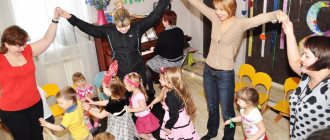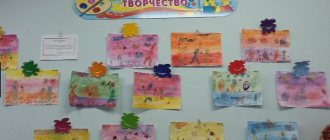Planning for FEMP in preschool educational institutions
It's hard to imagine school without mathematics. Children are prepared for it from a young age. Parents and educators put a lot of effort into ensuring that children have an understanding of basic mathematics. The plan plays an important role. Without it there can be no consistent study of this science. First, the plan is distributed over the year by month. It describes what children should be taught during the year, and what they should know at the end. Then he schedules the month by day (calendar plan). It indicates the days of classes. In the second junior group they are held once a week. The plan describes the goal, tasks, conducting educational games, and getting to know the outside world. Next, a long-term weekly lesson plan is created. Classes in kindergartens follow the same pattern, but the games are presented differently.
For example:
September – 1 week:
1. Task: didactic game “Studying the nesting doll.”
2. Goal: to understand what “one”, “there is not one”, “many” are (to develop ideas about a group of objects).
September – 2nd week:
1. Task: didactic game “Balloons”.
2. Goal: To develop an understanding of shape, variety and colors.
September – 3rd week:
1. Task: Didactic game “Arranging objects correctly.”
2. Goal: learn to develop attention and thinking.
September – 4th week:
1. Task – didactic game “Hide the Bear.”
2. Goal: to learn shapes and objects, how to correctly relate them.
As you noticed, FEMP in the second junior group is studied exclusively through didactic games. You also need to write a plan for other months. Then children, parents and teachers will have no questions left.



